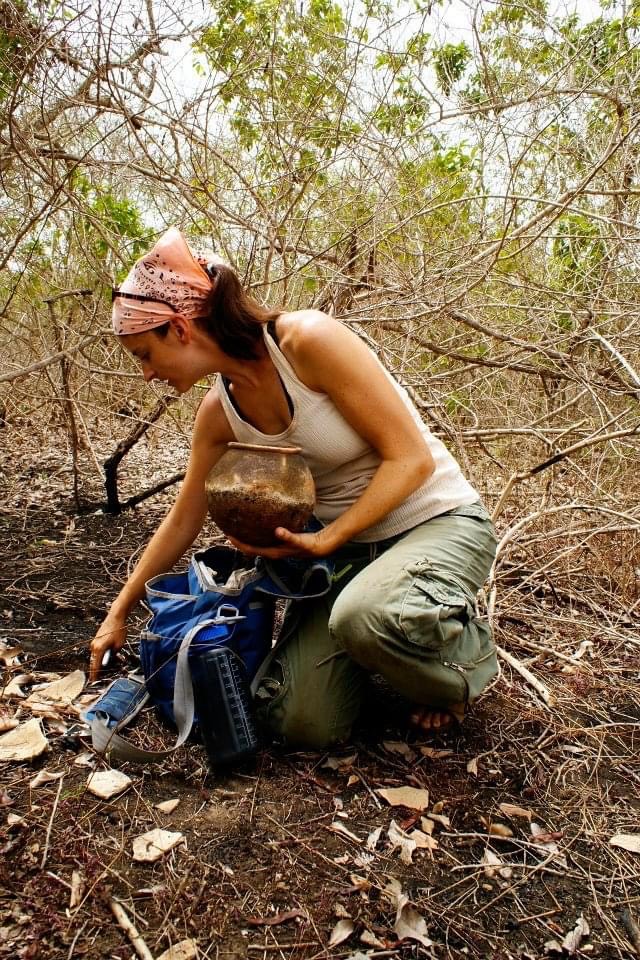Associate Professor of Anthropology, Dr Liza Gijanto, outlines how archaeological and historical investigations are vital in revealing important insights into society’s past
As a historical archaeologist, my research is collaborative and interdisciplinary by necessity. I have partnered with chemists, geologists, historians and architectural historians.
I have worked with museum professionals and government officials in the United States and The Gambia. And while research was my main focus as a graduate student to complete a Master’s and ultimately PhD, the most important aspect of all projects I have worked on during that time and since is the public benefit that can arise from archaeological research, particularly from projects that involve a range of professionals and stakeholders.
The field of historical anthropology is in a privileged, though often uncomfortable, position that addresses many of the inequities in the present.
What role does archaeology play in understanding our past?
On the most basic level, archaeology helps us understand our past by revealing how people lived, worked, and interacted in different societies throughout history.
Archaeologists can reconstruct the past and provide insights into the evolution of human behaviour, beliefs, and cultural practices by studying archaeological sites, artefacts, and other material remains.
I focus broadly on the creation and experience of the modern world on a global scale beginning with the European exploration and expansion into Africa and the Americas starting in the mid-1400s. We focused on the Atlantic World, that initial contact period between Europeans, Indigenous Americans and Africans until the early 1800s.
We seek to understand the complex interactions on all sides of the Atlantic and their legacy through the material remains that form archaeological sites.
During this period, the foundation of twentieth-century understandings of race, gender, and capitalism were formed. In addition, activists involved in various social and climate justice movements worldwide are in some way reacting to the decisions made during this period of history.
Understanding the Atlantic slave trade through historical investigations
Archaeological investigations of the Atlantic slave trade include multiple sites such as submerged shipwrecks, trading ports or towns on the West and Central African coast, port towns and cities in the Americas and Europe, and plantations.
My involvement in this area began as a graduate student at sites now forming the Cane River Creole National Historical Park (Louisiana, USA).
Excavations were directed by Dr Kevin MacDonald, current Director of the University College Institute of Archaeology and Dr David Morgan, Senior Archaeologist at the Submerged Resources Center, US National Park Service.
I was tasked with finding the location of nineteenth-century quarters using magnetometry–a non-invasive survey technique that ‘reads’ magnetic signatures below the surface created by soil movement or architectural features such as brick walls.
A magnetic signature differs from the surrounding soil when clay material is fired. Therefore, metal objects will give off a high magnetic reading. Former quarters in this area were likely raised structures on brick pilings, but the presence of old nails or trash pits would help us locate such structures.
After this experience, I moved across the Atlantic to focus on the slave trade in The Gambia, the smallest nation in West Africa and a previously contested space between the British and French during the seventeenth and eighteenth centuries.
As a PhD student, I developed a project with the support of my advisor Dr Christopher DeCorse. As a foreign archaeologist from the global north, engagement with the local community was an important facet of my experience.
A continued lack of funding to develop an archaeological programme
My goal in 2006 was to partner with the Gambia National Center for Arts and Culture (NCAC) to continue the archaeological training many of the staff had received through an exchange programme between themselves and Historic St. Mary’s City (Maryland, USA) partnering with St. Mary’s College of Maryland where I am now an Associate Professor.
However, it became apparent very quickly that the impact I had hoped to make would be minimal. The NCAC did and still does not have an official position for an archaeologist.
Furthermore, in conversations with NCAC staff, the lack of funding and resources required to develop an archaeological programme of their own was an indefinite problem.

Based on these circumstances, I entered a long-term partnership with them, whereby my research agenda was secondary, and my skills were directed towards developing different heritage sites that are part of the UNESCO World Heritage Area (Kunta Kinteh Island and Related Sites). This partnership included documenting historic structures before renovation or needed stabilisation and collecting and analysing artefacts for a museum exhibition or site interpretation.
Working with descendant communities
The main stakeholders in any project tied to enslavement are the descendants. While the Cane River project engaged enslaved descendants and plantation owners, my first direct experience collaborating with descendants was with the Liberated African community and the Half Die neighbourhood residents in Banjul, The Gambia. The Banjul Heritage project was initiated by Architectural Historian Orlando Ridout and Annapolis City Planner Bob Agee in 2008, in partnership with the NCAC, to document the rapidly disappearing colonial architecture due to development.
The project comprised archaeological and architectural components and interviews with residents and city council members. Working with NCAC staff, we collected oral histories regarding kirinting architecture unique to Senegambia, and abundant in the Half Die neighbourhood, giving it a distinct appearance.
This was a salvage project. Archaeology was limited to one site for one day. Ultimately, our goal was to document disappearing historic resources.
Drawing on these experiences, I recently began working with descendant communities. Cremona Farm in Mechanicsville, Maryland, was a site of slavery beginning in the late seventeenth century.
The descendants of the nineteenth-century enslaved have a strong oral history preserved. As a project team, we have started to develop plans for future archaeological and historical investigations focused on questions they have about their ancestors.
This is possible because of their work making connections among themselves and with the current property owner and various staff at the farm. In this partnership, I see myself as a facilitator who brings knowledge and skill sets unique to my training. I am not the driving force but simply a partner.

This work is licensed under Creative Commons Attribution-NonCommercial-NoDerivatives 4.0 International.


